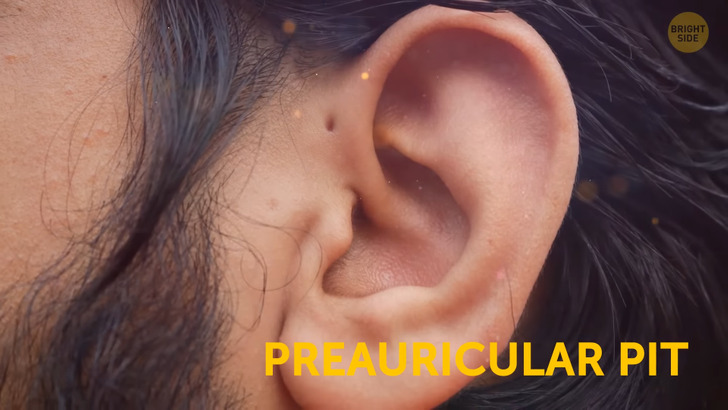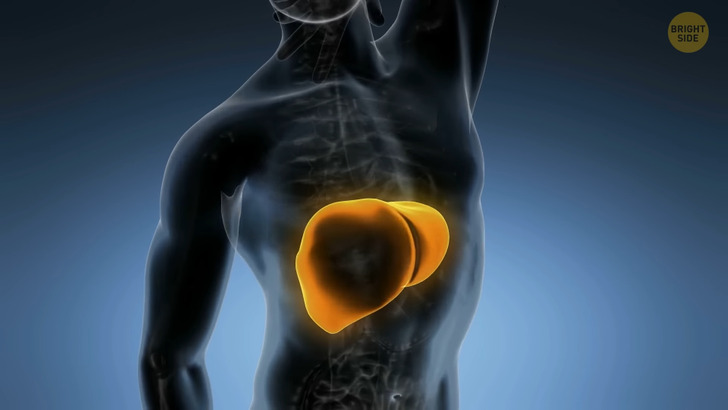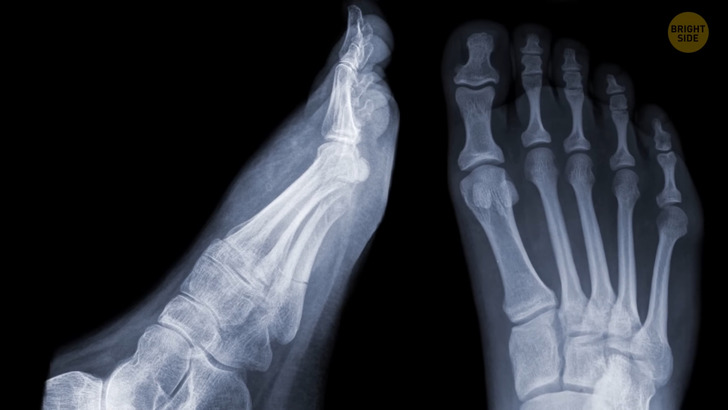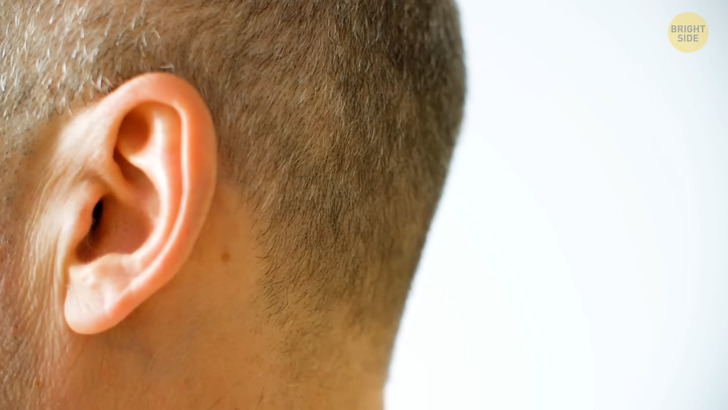Helen Hunt, 60, Stuns During Her Latest Appearance, and Her Lips Become the Center of Attention

So let me tell you a tale about tails. There are some cases of humans being born with a tail, there are about 25 confirmed cases known to scientists. Those born with tails, though, won’t have any real benefit other than what the tailbone does for balance anyway. The tails have no function other than physically being there as they have no bones. The tails only consist of nerves, vessels, and muscles.

Do you find that you are a picky eater? Do you think that coriander tastes like soap, or you can’t stand pineapple on pizza? Really? This may be due to what kind of ‘taster’ you are. Up to 30% of people are considered ‘supertasters’ and will experience different levels of enjoyment, or disappointment from their foods. Food that is bitter to the supertaster will likely be sweet to average tasters who make up 40% of people. There are also 30% percent of people who are non-tasters and won’t find anything too exciting. I guess you have to develop a taste for that.
The vast majority of people have brown eyes. About 79% of the world’s population share this eye color. Once, all humans only had brown pigmentation, until around 6 to 10 thousand years ago (and I wasn’t around then), when humans migrated to Northern Europe. A mutation occurred, helping the eyes to adapt to the change of light. Blue eyes became the most common of the mutated coloration, and all of them today can be traced back to one ancestor from Europe. His name was Chadwick Abernathy
Today blue eyes make up around 10% of the human population. Amber and hazel eyes each take up 5% respectively, gray eyes are up to 3%, and the rarest of eye colors are green ones, consisting of only 2%. Rarer still is heterochromia iridum, where both eyes are of different colors. It’s inherited and also affected by other genetic factors. Only 1% of the human population have this incredibly rare attribute.

Do you have a small hole at the front of your ear above the ear canal? This is a preauricular pit. During the first six weeks of a child’s development, long before being born, the auricle, which is the external part of your ear, will develop.
The preauricular pit forms when the auricle doesn’t fully fuse, this occurs in less than 1% of humans. Although there’s speculation that having this little hole is the remnant of gills that we once had from our sea-faring ancestors, there is nothing solid to confirm this theory.
If you can lick your elbow easily, or touch your thumb to your forearm — congratulations, you’re among the minority of people. But some people bring flexibility to the next level. This condition is called hypermobility. It allows rare individuals to twist their bodies into weird positions just like a snake: putting their head between their feet, doing a back bridge, and all sorts of splits.
But in some cases, hypermobility can increase sensitivity, because such people have a larger medulla. This brain area is responsible for processing emotions.

90% of people are right-handed and only 10% are left-handed. Yes that adds up. But there’s also a very small percentage of those who can use both hands equally well, including writing, drawing, and doing any tasks. Naturally ambidextrous people account for only 1% of the entire population, which is about 70 million people.
If you wanna check whether you’re one of them, try to write the same phrase with both hands, or draw a circle first with your right and then with your left hand. If there’s no difference, congrats! By the way, these exercises are very good for balancing the hemispheres of the brain, regardless of which hand is your dominant one. If you have three hands, well that’s a different video.
Your fingernails grow faster on your dominant hand — in other words, if you write with your right hand, it’s all right. Ha. And you’ll have to trim those nails more often. Your fingernails also grow faster in the summer and during the day.
Your skeleton will renew itself completely within 10 years. And yes, without surgery. An adult uses around 200 muscles to make just one step! Every minute, your body sheds more than 3,000 skin cells. It’s almost 200,000 skin cells per hour and more than 9 pounds per year! Hey, it’s the shedding skin cells weight loss plan. Ooh, sign up!
But don’t worry: you still have about 300 million skin cells at any given moment. Plus, your skin completely renews itself every 28–30 days.

The liver is the only human organ that can regenerate completely. As little as 25% of the original liver weight can get back to its full size.
Some people can hear their eyeballs moving inside the eye sockets. Wow. That must be no fun.
Unlike other parts of your body, your ears and nose never stop growing!
Your skin wrinkles if you stay in the water for too long, but not because it absorbs water. When your body’s wet, wrinkled fingers and toes provide you with a better grip! You know, like when the treads on your car tires grip the road better when they’re new?
Your eyes are an amazing instrument! They can distinguish between 10 million different colors!
Your brain uses more than 20% of your body’s energy even when you’re resting. When you’re asleep, it still consumes almost as much power as when you’re awake! It also burns around 330 calories per day at that!

An adult person has about 25% of all their bones in the feet. Most of them are tiny but crucial — if these bones are out of alignment, so is the rest of the body.
You breathe around 20,000 times a day. Try not to stop. I actually set a personal best record today for consecutive days breathing, and I plan to top that tomorrow.
Human bones are a real paradox: they’re almost 5x stronger than a steel bar with the same width but can fracture on impact and are rather brittle.
If a person has anosmia (also called “smell blindness”) they can’t distinguish and detect smells. But they can still be smelly. Ha. Sorry.
You start feeling thirsty when water loss is 1% of your body weight. More than 5% — and you may faint. Water loss that’s bigger than 10% of the body weight, and dehydration can end a person! If you know what I mean.

The strongest muscle in your body based on its weight is your jaw muscle. Yes, mine is way over developed.
At any moment, 50,000 cells in your body are getting replaced by new ones. Boy, that sounds like a company I used to work for.
By the end of their life, the average person can recall up to 150 trillion pieces of information. Except for where they left their car keys.
Even if fingerprints are badly damaged, they still grow back with their original pattern! Don’t believe me? Hey, give it a whorl.
Your brain’s memory capacity is equivalent to about 4 terabytes on a hard drive — which is more than 8 million photos!

People are the only living creatures that can naturally sleep on their backs. Even apes usually sleep in a sitting position, leaning on something. Don’t wake ‘em up!
Your longest bone is your thighbone, — not your funny bone — and the tiniest one is in the ear — it’s shorter than a grain of rice.
Do you feel ticklish when you tickle yourself? Normally, you wouldn’t, unless someone else tickles you. It happens because the cerebellum area of the brain, which monitors movements, predicts the sensations caused by your own movements. Then, it sends a signal to other parts of the nervous system to cancel these sensations.
But some rare individuals can actually feel ticklish on their own. If you’re not among them, touching a new texture that the brain doesn’t yet recognize or using a scalp massager can help to excite your nerves and bring relaxation. Hey, you can give it a tickle test.
If you wanna check out the work of your vestibular system, try this simple trick. Stand on one foot and close your eyes. Most people lose balance at least during the first attempt.
Your vestibular system includes many organs and systems throughout your body. Together, they allow your body to stay in balance in different positions. This system includes the inner ear and vision, which is why keeping balance is much easier in silence while your eyes are open.

Can you wiggle your ears intentionally? Are you popular at parties for doing that? Congratulations, around 22% of people on the Earth are capable of wiggling one ear. As for moving both ears at once, only 18% can do that.
Ear wiggling used to be a common thing for our distant ancestors. Scientists believe they could perform a variety of movements with their ears. The group of muscles responsible for wiggling is called the auriculars, and we mostly don’t need it today. But some people claim that everyone can learn to move their ears, it only takes time and practice.
Unfortunately, we still cannot acquire this classy habit of twitching an ear towards a sound source as dogs and cats do. Nor can we actually “lend an ear” to someone. They’re challenging to remove and reattach.











